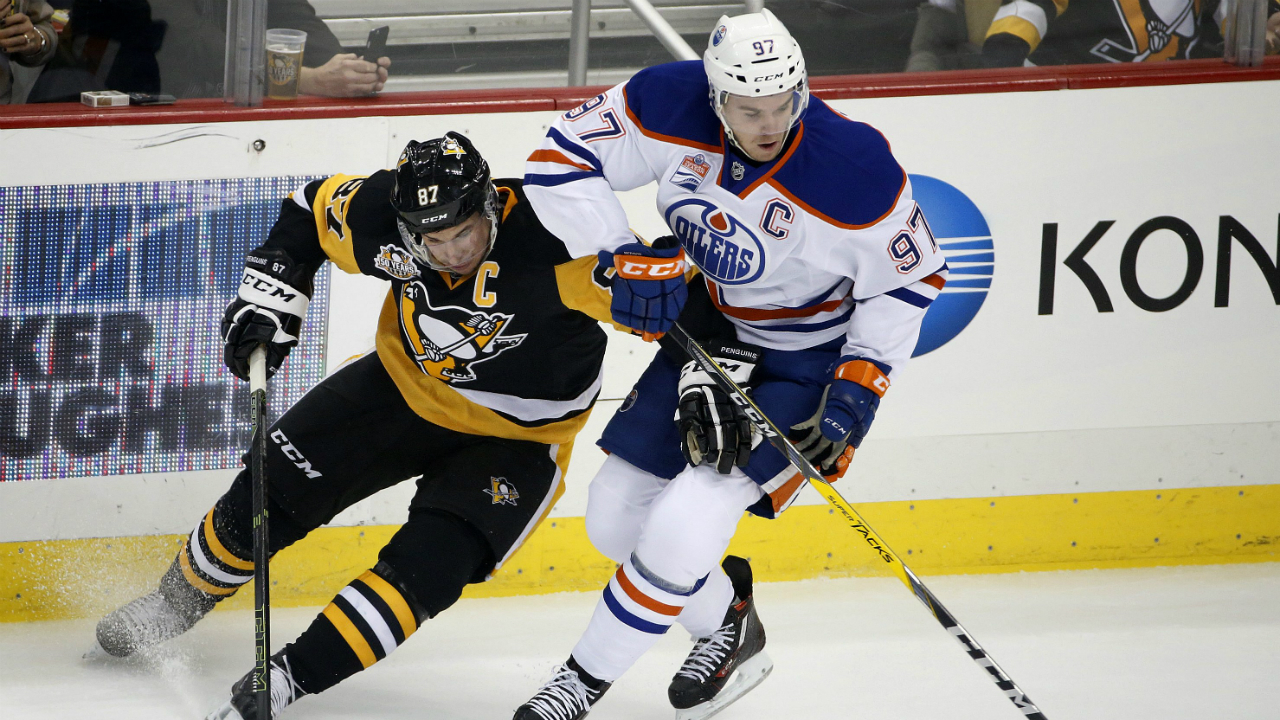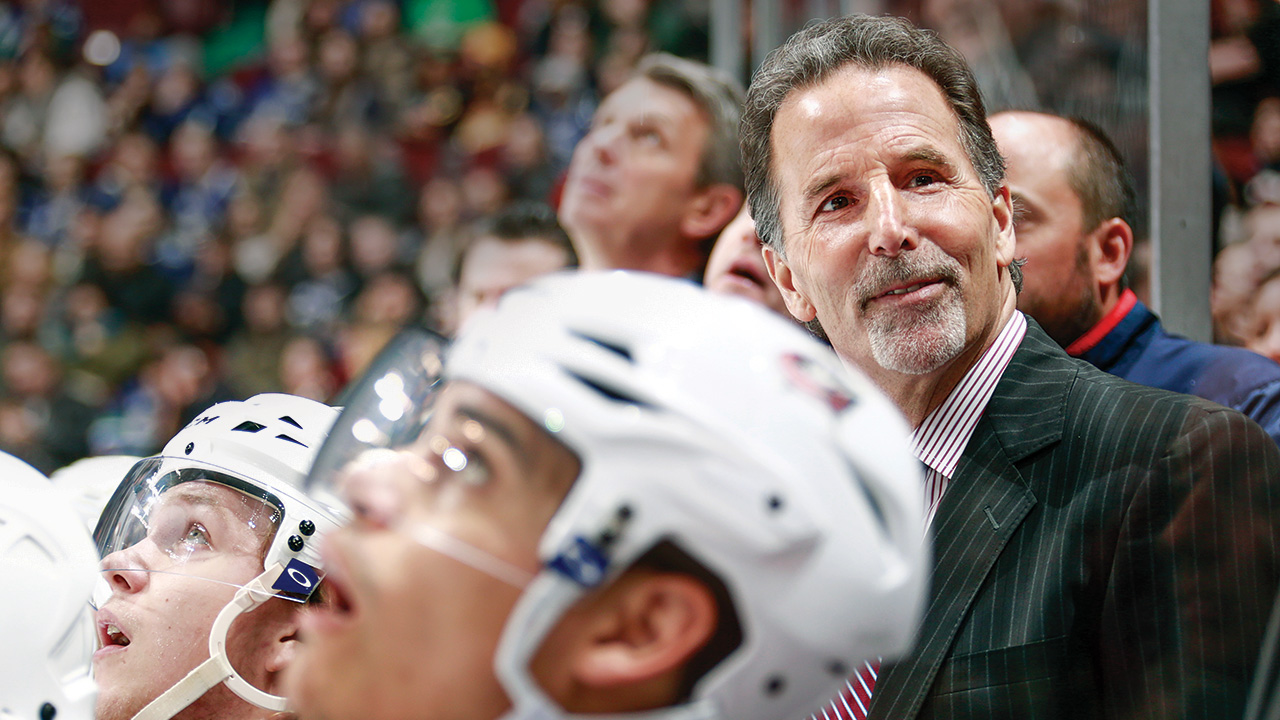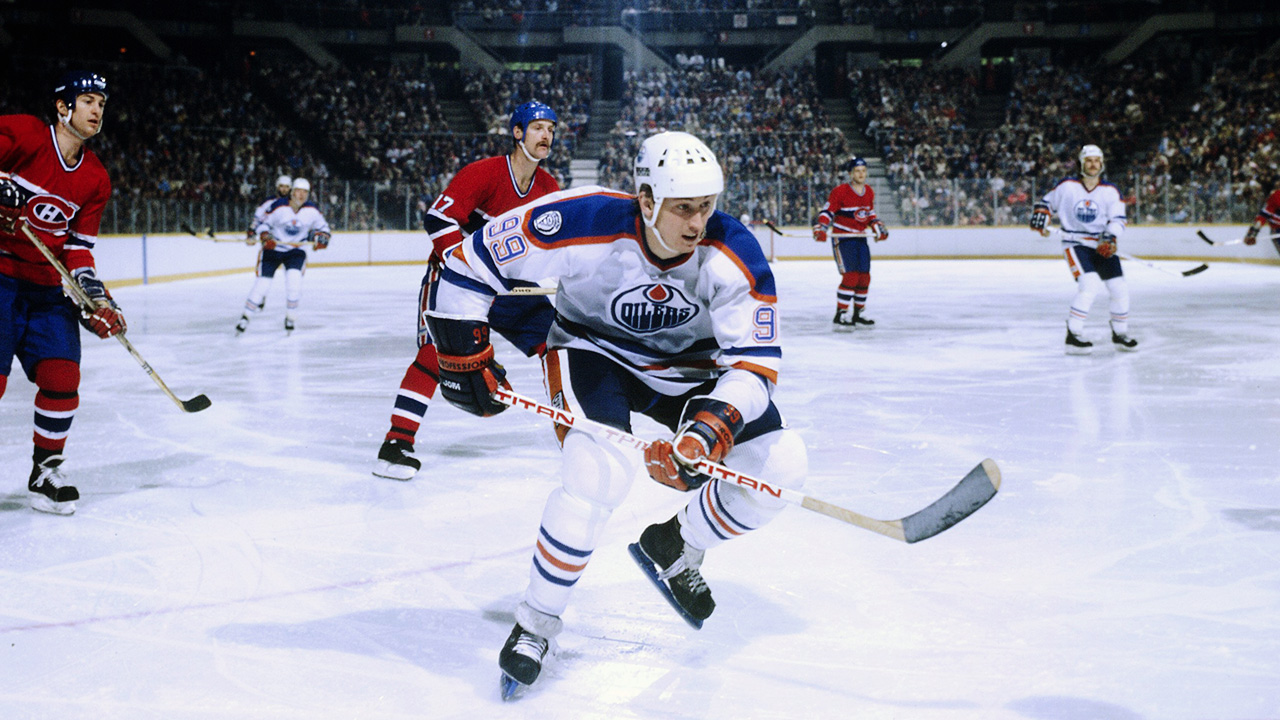Sudarshan Maharaj kicked back at a friend’s house after a long night, savouring the company and the warmth of the indoors—a nice respite from the December cold of Hällefors, Sweden. It was 1987, and Maharaj was playing goal in a Swedish pro league. He’d been out that night attending a fundraiser with teammates and, good enough to DD, had dropped several of them off before parking his Toyota—a loaner from the team—in his friend’s driveway.
Maharaj was unwinding when he heard what sounded like glass shattering outside. He turned toward the window and saw a flash of light streaking upward, something he’d later learn was a Molotov cocktail. It was followed, suddenly, by the concussive boom of a small explosion.
Maharaj rushed to the window and looked out to find the winter night lit by the Toyota, engulfed in flames. He scrambled outside and tried to extinguish the blaze with snow he scraped from the ground with his bare hands, but it wasn’t long before he was forced to acknowledge his efforts were pointless: the fire had caused enough damage that there was a real possibility the car could blow up and the inferno could spread to the house. He backed off as friends called the fire department. “I initially tried to put it out and then realized it was moot,” he says.
Maharaj was the new guy in town. On the ice, his face was partially hidden by a goaltender’s mask. But off it, the 23-year-old’s brown skin stood out. That difference was enough for a group of local men, including one recently released from prison, to hate Maharaj. So when they saw him out with teammates that eventful night, they decided to follow him. And after he’d finished his rounds and parked at his friend’s place, they seized the opportunity.
By the time Maharaj had run out to the flaming vehicle, those men were long gone. But in the days that followed they made sure their target understood what their message meant. “It wasn’t a secret,” says Maharaj. “They weren’t too shy about bragging about it. They would drive by my apartment and yell stuff.”
He recalls coming home one day after practice to find one of the men sitting in the common area, waiting for him.
“At that point you’re starting to think, ‘Hang on a second. I’m by myself in a foreign country and these guys clearly aren’t operating with full capacity,’” Maharaj says. “You start to wonder, ‘Am I in trouble here?’ But it never ended up going any further than that.”
Maharaj spent six years in Sweden and refuses to allow those incidents to cast a shadow on his time there, choosing instead to feel grateful for a formative period in his life that changed the way he views the world. But the racism he endured as a visible minority in hockey didn’t end with his playing career. It’s followed him for another two-and-a-half decades and, he believes, has cost him opportunities within the sport.
Maharaj, now 52, is not comfortable talking about the racism he’s faced in hockey, preferring not to make his skin colour a focal point. “Getting angry about it will actually change very little,” he says. He’s found that his best weapon against the ignorance of others is simply to be good at his job. And Sudarshan Maharaj, goaltending coach for the Anaheim Ducks, is among the best in the world at what he does.
“All you gotta do is, at next year’s draft, just follow Sudsie around for an hour,” says Dallas Eakins, current bench boss for the Ducks’ AHL affiliate San Diego Gulls and one of several hockey folks who define Maharaj as a man utterly devoted to the craft of teaching. “It’s amazing how many people are coming up to him with a smile, a story and always a laugh. He’s touched a lot of people with his personality and charisma … The most impressive thing is that the gentleman from Trinidad is a top goalie coach in our game. It’s incredible.”

Maharaj was born in Couva, Trinidad, in 1964. When he was young, his father, Sharma, had trouble finding work. In 1969, after a well-travelled family member told him that greater opportunities existed in Canada, Sharma left the island to try to establish himself in the new country. His wife, Dhanmatee, and sons—Deen, Dave and Sudarshan—joined him a year later.
The family settled in Etobicoke, in the west end of Toronto. Sharma cleaned cars for a living, and eventually graduated to selling vehicles. Dhanmatee—“Danny” as everyone called her—found factory work. The Maharajs moved into their first house in 1972, and Sudarshan’s love for hockey blossomed.
On Saturdays, the entire family would tune in to Hockey Night in Canada. “There wasn’t a heck of a lot more to do in terms of entertainment on a Saturday night on television,” he says. TV was one thing, but Maharaj and his brothers also wanted to play. They’d sit every day by the house’s front window watching as neighbourhood kids played street hockey. Eventually, one of those children came to the door, knocked and said, “Hey, you guys wanna come and play?”
Those neighbourhood games birthed a nickname that’s followed Maharaj his entire life: “None of the kids could say ‘Sudarshan,’” he recalls. “So they added an ‘s’ to the first three letters: Suds. And then you get the mandatory ‘ie’ ending in hockey, so ‘Suds’ became ‘Sudsie.’”
But the inclusion Sudsie and his brothers enjoyed in street hockey wasn’t something that extended to all facets of life for the Maharajs. The family was one of few of colour in the area. Maharaj’s parents faced racism from overt name-calling to exclusion from some jobs, and the boys had experiences of their own in the schoolyard.
“My parents were specific from a very early age in telling us, ‘You know what, that’s reality,’” says Maharaj. “‘That’s what you’re going to face. And if you are going to progress then you have to be two times as good as everybody else.’”
Those street hockey games led Maharaj into house leagues and eventually on to York University, where he won a CIS championship, and then to Northern Europe. But after leaving the Swedish league in 1991, he retired from playing, returning to Etobicoke in hopes of furthering his education. He enrolled in teacher’s college and after graduating in the mid-1990s, he went to work as a Grade 4 teacher. A few years later he transitioned into a role in which he helped students with behavioural issues, including some with gang connections. The new position—based at Highfield Public School in Etobicoke—was more demanding but freed him from the rigidity of grade school teaching. It was fulfilling, too.
“I really enjoyed working with the [gang-affiliated students] in particular,” says Maharaj. “A lot of these guys were from some pretty harsh upbringings and yet they managed to adopt this form of loyalty that was really unbelievable—misguided as it was at times. If you could help them, learn from them and connect with them, they were loyal as pit bulls.”
Maharaj recalls one young girl he was called to work with in particular. Each day she would arrive at school with her homework untouched, causing teachers to take away recesses and replace them with after-school detentions. When Maharaj tested the girl, he found no major learning issues. Figuring there was more to the story, he dug deeper.
He asked around the neighbourhood and discovered the girl’s mother was a prostitute who often brought johns back to the apartment. The child was so afraid of these strange men she would hide in the closet, where there was no light. She wasn’t able to do her homework in the dark and often slept in that confined space.
“Had I just accepted the stubborn little girl that I was faced with, I would have completely missed the point,” Maharaj says. “It really taught me to look beneath the surface to find the answers. As old as the saying is: ‘Never judge a book by its cover.’ People do what people do for a reason.”
Throughout his teaching career Maharaj kept his foot in hockey by coaching various junior teams in the Toronto area. By chance one summer he connected with a young goaltender named Steve Valiquette. The two met at a camp run by one of Maharaj’s friends and hit it off. Valiquette was so impressed by his tutor that when he was later called up to the New York Islanders, he had his agent contact Maharaj to ask if they could resume working together.
Maharaj accepted, and through Valiquette he met Islanders goaltenders Kevin Weekes and Rick DiPietro. In 2003, he became the Islanders goaltending coach.
“He was always trying to get better and learn from other people,” says Scott Gordon, a former head coach of the Islanders. “He strived every off-season to try and learn something outside the box. It didn’t necessarily have to do with hockey, but just educating himself. It could be something about praying, it could be something about understanding how the body works, how the mind works. There always seemed to be something that he was bettering himself in.”
Over the last few years Gordon, now head coach of the Philadelphia Flyers’ AHL affiliate Lehigh Valley Phantoms, has turned to Maharaj for help with his 17-year-old son, who’s also a goalie. Gordon’s sent over film of his son’s games in the North American Hockey League and says Maharaj has been able to quickly analyze and identify problem spots in the young netminder’s mechanics.
That ability was honed during Maharaj’s time at the helm of Hockey Canada’s Program of Excellence Goaltender Camp, a development program for the country’s top under-20 and under-18 goalies—first established in 2006—that brought promising keepers to Calgary to receive specialized training and work with nutritionists, sports psychologists and exercise physiologists.
“At that time we felt that we were slipping in that key position on the world stage,” says Johnny Misley, former Hockey Canada vice-president.
Misley and his team hired Ian Clarke, then the goaltending coach for the Vancouver Canucks, and needed one more consultant to help lead the on-ice component of the program. Maharaj came highly recommended and they decided to bring him aboard.
“His background as an educator was important,” says Misley, currently executive director of the Ontario Soccer Association. “He understands teaching. We were working there with some goaltenders who are 16 to 19 years of age and we needed people who were solid teachers.”
Leaving the Islanders in 2006, Maharaj spent parts of the next two years in the new role, working with a bevy of young Canadian goalies who would go on to succeed in the NHL and at international tournaments, including Jonathan Bernier (who’s now a backup for Maharaj in Anaheim), Steve Mason and Kevin Poulin. Through his work in the program he also left his mark on two of the best netminders in the world: Carey Price and Braden Holtby.
Maharaj rejoined the Islanders in 2009 and moved on to the Ducks organization in 2013. He became a goalie consultant for Anaheim’s AHL affiliate where he was charged with, among other things, developing another bright young goaltender, John Gibson. The two are now in their fourth season together.

Gibson had been shuttled back and forth between the AHL and NHL for several years, but last summer a deal that sent Frederik Andersen to the Toronto Maple Leafs opened the door for Gibson to solidify himself as the No. 1 starter. Around the same time, Dwayne Roloson stepped down as Ducks goaltending coach. Maharaj was promoted to fill the vacancy.
Gibson, who calls Maharaj a friend in addition to a coach, was happy with the team’s decision. “It was exciting,” he says. “I’ve been working with him for basically all of my pro career. He’s had a big impact helping me out. Not having to worry about change or anything different is always nice.”
The 23-year-old, who was selected 39th overall by the Ducks in the 2011 draft, admires that Maharaj never tried to change his playing style and says they gelled instantly. “We have similar personality traits,” says Gibson, “Both being pretty laid back and calm. It’s definitely something I noticed.”
Eakins joined the Ducks’ AHL squad in 2015 and witnessed the working relationship between the pair, but maintains that Maharaj treats all his goalies equally. What struck Eakins about the coach was his ability to connect with people. “If you’re going to get your point across, as a teacher, coach or leader, the athlete has to feel safe,” says Eakins. “Because of Sudsie’s personality—the way he invests his time and interest and focus in you—the trust that he has with his goaltenders immediately is incredible.
“His patience level is also incredible,” Eakins adds. “There are some parents, teachers and coaches, who when a problem arises, their first reaction is to yell and scream. Sudsie’s first reaction is to press pause, take in all the information and find a solution without going down that route.”
A year ago, Maharaj was behind the wheel of a rental car, driving the Gulls coaching staff to a game in San Jose, Calif. As the group pulled up to the rink a security guard, who happened to be a person of colour, approached.
Eakins identified the group as the Gulls coaching staff and asked where they should park. The guard’s eyes fixed on Maharaj for a moment before shifting back to Eakins as he asked if the driver would be staying with the car while the personnel conducted their business in the arena.
“No, this is our staff and that gentleman is our goaltending coach,” Eakins shot back.
“The security guard was extremely apologetic,” recalls Eakins. “Sudsie just started laughing. He thought it was funny. But that’s Sudsie.”
Maharaj understands the reality of his situation, and he’s made peace with it. That may explain why a security guard not associating the colour of his skin with his job in hockey is no big deal. He can let it slide.
After all, he’s been through worse.





